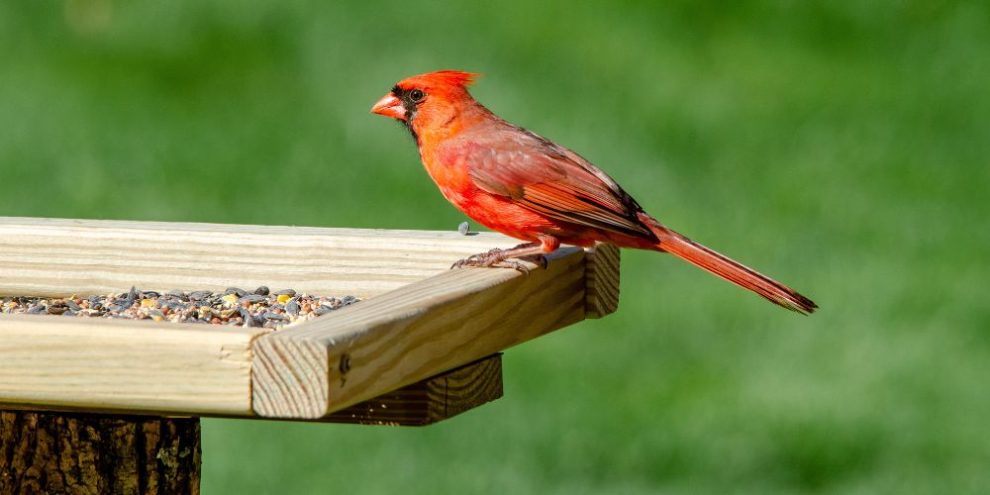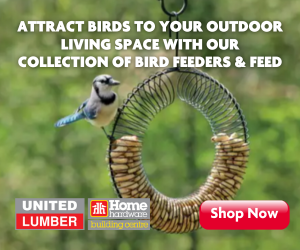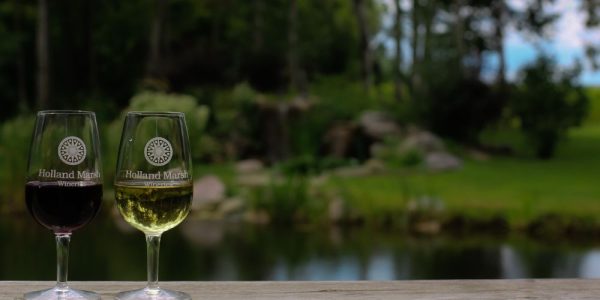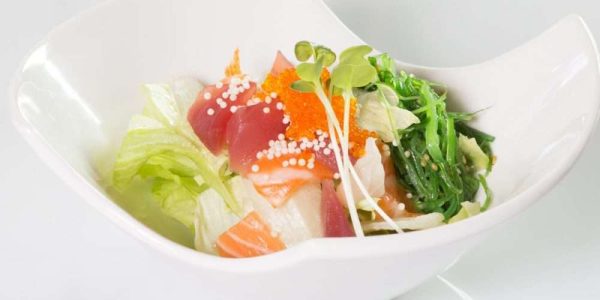
This Barrie 360 content is brought to you by United Lumber Home Hardware
Birdwatching is a captivating hobby that brings us closer to nature's beauty. To attract a variety of birds to your garden or backyard, choosing the right kind of bird feeder and food is crucial.
A well-designed bird feeder not only provides nourishment to our feathered friends but also offers a rewarding birdwatching experience for enthusiasts of all ages.
This guide will help you select the perfect bird feeder and food for your personal bird paradise. We’ll also talk about placement and the best way to attract birds to new feeders.
What To Look For In A Bird Feeder
There are many different types of bird feeders that you can choose from and each has a different purpose. As such, features will vary from one bird feeder to the next.
There are, however, some general features that you should look for in every bird feeder that you buy. Let’s take a look at what these are and then we can talk about specific types of bird feeders and the birds they attract.
- Design and Construction: Look for sturdy and durable materials, such as metal or high-quality plastic, that can withstand weather conditions and resist squirrel or other pest damage.
- Ventilation: Opt for feeders with proper ventilation to prevent mold and moisture buildup.
- Feeding Ports/Perches: Consider the number and size of feeding ports or perches. Different bird species have varying preferences, so choose a feeder that provides enough space for birds to comfortably access the food and accommodate their beaks or feet.
- Capacity: Determine the amount of food the feeder can hold. If you have many bird visitors, opt for a feeder with a larger seed capacity. If there are fewer birds in your area, select something with a lower capacity to reduce the risk of seeds going bad.
- Ease of Cleaning and Maintenance: Look for feeders that are easy to disassemble and clean. Removable parts or feeder designs that allow for a thorough cleaning will help you maintain a healthy feeding environment and prevent the spread of diseases.
- Protection against Squirrels and Larger Pests: Consider feeders with features that deter squirrels and larger animals, such as weight-sensitive mechanisms or baffles. This ensures that the birds have uninterrupted access to the food while deterring unwanted visitors.
- Weather Protection: Look for feeders with adequate rain covers, trays, or drainage holes to prevent seed spoilage and maintain food freshness during inclement weather.
- Winter Proof: Because we live in the great white north, it’s important to ensure your feeders can withstand our winter weather. Look for sturdy feeders made of materials that can handle colder temperatures. If your feeder is not designed for winter, be sure to clean and store it until the snow has gone.
- Flexibility in Food Options: Choose feeders that offer versatility in the types of food they can hold. This allows you to cater to different bird species by offering various foods, such as seeds, suet, nectar, or fruits.
- Safety Considerations: Ensure that the feeder is safe for birds, with no sharp edges or parts that could potentially harm them. You also want to position the feeder in a safe location (we’ll talk about this in more delta later on.)
Now that you know more about the general features to look for in a bird feeder, let’s talk about the different types (because there are a lot of them).
Types Of Bird Feeders
If you’ve ever shopped for bird feeders you may have noticed that there are tons of different shapes, colours, and styles. While it may seem like it … this isn’t just for aesthetics.
Each type of bird feeder is designed to attract different species of birds. That’s why knowing what types of birds you wish to attract is critical in choosing the right bird feeder.
Some species prefer feeders with small perches and tiny feeding ports, while others are more comfortable with larger perches or feeding trays. Then there are species, like hummingbirds, that require specialized feeders.
To help make sure you’re yard is filled with the birds you’re most excited to watch, let’s take a look at the different types of feeders and the birds that they attract.
1. Tray Feeders
Tray feeders, also known as platform feeders, are among the most common types of bird feeders.
They consist of a flat platform with raised edges, providing birds with a stable surface to perch and feed.
Tray feeders offer a versatile option for offering a variety of food types, such as seeds, fruits, nuts, or suet. That means they also attract the widest variety of bird species, including sparrows, jays, doves, grosbeaks, chickadees, blackbirds, buntings, starlings, nuthatches, and cardinals.
One major downfall of most tray feeders is that there’s no protection from the elements. That means they need to have proper drainage to avoid sitting water that can ruin your feed. To avoid this, opt for a tray with a screened bottom or several drain holes.
Another issue with tray feeders is that some birds will poop in them, which can make a mess and spoil your seeds.
To reduce waste, only put enough seeds for a day or two and consider a tray feeder with a roof to offer some protection from the elements.
2. Hopper Feeders
Hopper feeders are popular for their large seed capacity and distinctive design.
These feeders feature a reservoir or hopper-like container with multiple feeding ports, which dispense seeds gradually as birds consume them. This design helps protect the seeds from the elements and bird droppings, ensuring they stay dry and fresh for longer periods.
Hopper-style feeders attract birds like cardinals, chickadees, nuthatches, grosbeaks, sparrows, finches, jays, and more.
3. Tube Feeders
Tube feeders are slender, cylindrical feeders with multiple feeding ports and a reservoir for holding seeds. These feeders dispense small amounts of seeds at a time, minimizing waste and preventing moisture buildup. Some tube feeders may also have perches attached to accommodate different feeding preferences.
Tube feeders are particularly attractive to finches, sparrows, chickadees, and other small clinging birds.
A major downfall of tube feeders is that the seeds extend a couple of inches below the last feeding port. Over time, these seeds can become a breeding ground for bacteria. To avoid any issues, it is best to block the bottom of the tube below the last feeding port or buy a tube feeder that does not extend beyond the last port.
4. Window Feeders
Window feeders are designed to be attached to your windowpane, providing an up-close and personal view of the birds that visit your yard.
With a window feeder, you can observe birds with incredible detail, from their vibrant colors and intricate plumage to their fascinating behaviors and interactions.
The convenience of observing birds from the comfort of your home, coupled with the minimal disturbance to their natural routines, makes window feeders a popular choice among bird lovers.
Additionally, these feeders are easy to maintain and refill, ensuring a continuous supply of food for your avian friends. This is important as they are more easily soiled so need to be cleaned and filled with fresh food more regularly.
Window feeders attract birds like cardinals, robins, finches, chickadees, titmice, and sparrows.
5. Suet Feeders
Suet feeders hold suet cakes or blocks, which are made from rendered animal fat mixed with grains, nuts, or seeds.
These feeders typically consist of a wire cage or mesh container that holds the suet while allowing birds to cling to it and peck at the food. You can hang them on trees, feeder poles, or railings.
Suet feeders are a favorite among woodpeckers and nuthatches, but they also attract blue jays, wrens, nuthatches, chickadees, and other birds that enjoy high-energy food sources. If your suet feeder is only open at the bottom, it will deter birds that have trouble perching upside down, like starlings.
Some people use onion bags for their suet cakes, but in rare situations, birds can get caught up in these. As a result, it is better to opt for a suet cage.
6. Nyjer/Thistle Feeders
These types of feeders are for tiny Nyjer seeds, also known as thistle seeds.
These small, black seeds are rich in oil and attract goldfinches, siskins, and other small-billed birds.
Nyjer feeders have small feeding ports that allow birds to extract the seeds while preventing spillage. They often have mesh or fine perforations to dispense the tiny seeds more effectively.
While these feeders can be quite delicate, they generally don’t attract other creatures like squirrels, keeping them safe from damage and gluttony.
PRO TIP: If you have a Nyjer feeder with lots of seeds piling up on the ground underneath, don’t stress. The black part is only the shell. Once the birds extract the seed within, they will drop the shell.
7. Oriole Feeders
Oriole feeders are specifically designed to entice vibrant and melodious orioles.
These feeders usually feature bright orange colors, which naturally attract orioles due to their preference for the color orange.
One of the key features of oriole feeders is nectar wells. These small reservoirs hold a sweet and sugary solution that closely mimics the nectar found in flowers, which is a primary food source for orioles.
To cater to the diverse dietary preferences of orioles, some feeders may also feature compartments for offering other food such as fruit, jam, jelly, or mealworms (these are especially important during the breeding season).
Fruits, such as orange slices or halved grapes, are popular choices for orioles. The sweet, juicy flesh of fruits appeals to their taste buds and provides them with essential vitamins and nutrients.
PRO TIP: Keep these feeders up high and away from your home to avoid attracting ants.
8. Hummingbird Feeders
Hummingbird feeders attract and cater to the unique needs of (you guessed it) … Hummingbirds!
Generally, these feeders are bright red. This hue imitates the vibrant colours of flowers and helps grab the attention of hummingbirds, who are naturally drawn to the color red. These feeders also have a distinct design, consisting of a large reservoir and small strategically placed feeding ports.
The reservoir is filled with a specially prepared nectar solution. The sweet solution mimics flower nectar and serves as a vital energy source for these tiny birds, as it provides the high-calorie fuel they need to sustain their rapid wingbeats and constant activity.
You should wash these feeders daily and refill them at least a couple of times a week, if not daily.
9. Peanut Feeders
These feeders hold whole or shelled peanuts, which are a highly nutritious and energy-rich food source for birds. They’re also a favourite among bird watchers as it takes longer for birds to peck and eat the nut providing more entertainment.
Peanut feeders often feature mesh or wire constructions that allow birds to cling to the feeder while pecking at the peanuts. This design not only offers easy access to tasty treats but also prevents the peanuts from falling out, minimizing waste.
These feeders are typically durable and can withstand the pecking and clinging behaviors of birds. They’re a fantastic choice for attracting a wide range of bird species, including woodpeckers, nuthatches, chickadees, and jays.
Fun Fact: Blue Jays can smell peanuts within a 5-mile radius.
10. Water Feeder
If providing a food source isn’t up your alley or you are wanting to add more variety to your bird paradise, consider a water feeder.
Bird water feeders provide birds with a readily available source of clean and fresh water for drinking, bathing, and maintaining their plumage. These types of feeders include baths, basins, dishes, and fountains.
The presence of a water source attracts a wide array of visitors, from small songbirds to larger water-loving birds like robins or thrushes. And they make for a fun opportunity to observe delightful behaviors as birds frolic, splash, and preen in the water.
Like other feeders, regular maintenance is key to ensure the water is safe and enticing to birds. This includes regular cleanings and providing fresh water every day.
Where To Put Your Bird Feeders
Once you've selected the appropriate feeder, it's essential to position it correctly.
To maximize the effectiveness and enjoyment of your bird feeders, you must carefully consider their placement. Let’s explore the key factors to keep in mind when deciding where to place bird feeders.
Safety First
The safety of birds should be your top priority when choosing a location for your bird feeders.
Place them in areas that are away from potential hazards such as reflective surfaces, busy roads, and areas frequented by predators. You also want to avoid windows as they can cause fatal collisions. If you have a window nearby, consider placing feeders at least three feet from windows to minimize the risk.
If you are using a window feeder, use curtains and decals to warn birds that there’s glass nearby.
PRO TIP: While some people will recommend a one-way mirror window cling, this is not ideal. Territorial males may attack their own reflection, leading to serious injuries.
In addition to keeping the birds safe, consider pets and children. You want to be sure your feeder is located away from where they play so they can’t accidentally eat fallen seeds and shells or come into contact with bird droppings.
Shelter and Cover
Birds prefer feeding in areas where they feel safe and protected. By providing natural cover and shelter, you can create an inviting environment for them.
Place your feeders near trees, shrubs, or other vegetation that can serve as perches and hiding places for the birds. This will allow them to observe their surroundings and retreat to safety if necessary.
Accessibility
Consider the accessibility of the bird feeders for both the birds and yourself.
Locate them in a spot that is easily visible and reachable for regular cleaning, refilling, and maintenance. This will ensure the feeders remain hygienic and stocked with fresh food, making them more attractive to the birds.
Distance From Predators
Birds are cautious creatures and prefer feeding in areas where they have a clear line of sight to potential threats.
When placing your bird feeders, aim for a location that provides good visibility while minimizing the risk of predators sneaking up on feeding birds. Positioning feeders at least ten feet away from shrubs, trees, or other structures that could conceal predators is advisable.
Sun And Wind Exposure
Take into account the amount of sun and wind exposure in the chosen location. Providing some shade during the hot summer months can make the feeding area more comfortable for birds.
Additionally, avoid placing feeders in areas prone to strong gusts of wind, as it can make it difficult for birds to access the food and can cause feeders to swing or tip over.
Multiple Feeder Stations
To accommodate a larger number of birds and reduce competition, consider setting up multiple feeder stations.
This can be especially beneficial if you have a variety of feeders offering different types of bird food. By spreading the feeders out across your garden or yard, you'll create a more diverse feeding environment and minimize overcrowding at a single location.
Choosing The Right Bird Food
Like bird feeders, the food you choose has a huge effect on the types of birds you attract.
So, let’s delve into the different types of bird food available and explore which birds they attract.
Seeds
Seeds are a staple in most bird feeders as they attract a variety of birds. Here are a few types of seeds you may want to try:
- Black Oil Sunflower Seeds: Sunflower seeds are a favorite among a vast array of birds, including cardinals, chickadees, finches, nuthatches, and woodpeckers. Black oil sunflower seeds are particularly popular due to their high oil content and thin shells, making them easy for birds to crack.
- Striped Sunflower Seeds: These seeds have thicker shells, making them more challenging for some birds to open. As such, larger birds, such as jays and grackles, prefer these seeds.
- Nyjer Seeds (Thistle): Nyjer seeds are tiny black seeds that are highly attractive to finches, such as goldfinches, siskins, and redpolls.
- Millet: Millet seeds are small, round, and widely enjoyed by sparrows, juncos, doves, and various ground-feeding birds. These seeds can be scattered on the ground or offered in low-lying platform feeders.
- Safflower Seeds: Safflower seeds are a nutritious option that are great for deterring squirrels and some common feeder pests. The birds that are known to eat safflower seeds include cardinals, doves, finches, and nuthatches.
- Pumpkin Seeds: Pumpkin seeds are a nutritious food source that can be offered to birds, particularly during the fall season when pumpkins are readily available. They can be fed raw or roasted and are great for attracting jays, woodpeckers, nuthatches, and chickadees.
- Hemp Seeds: Hempseeds are small, nutritious seeds derived from the hemp plant. They're rich in protein, healthy fats, vitamins, and minerals, making them a beneficial food source for birds. Hempseed is great for attracting finches, sparrows, cardinals, doves, and nuthatches.
- Mixed Birdseed: While the exact composition of mixed seed may vary from one product to the next, you can be sure they’ll attract a wide range of bird species.
Nuts
There are several types of nuts that you can offer to wild birds. Nuts are a great source of protein, healthy fats, and nutrients for many bird species. Just make sure they are unsalted without any flavours or coatings.
When offering nuts to birds, it's best to provide them in appropriate feeders or trays to prevent wastage and keep them dry. Remember to monitor the nuts for freshness and remove any spoiled or moldy ones promptly.
Here are different types of nuts commonly fed to birds and the birds that are attracted to them:
- Peanuts: Peanuts are a popular choice among bird enthusiasts. They can be offered either in-shell or shelled. Birds that enjoy peanuts include bluejays, woodpeckers, chickadees, cardinals, and nuthatches.
- Almonds: Almonds are another type of nut that can be fed to birds like jays, titmice, chickadees, and nuthatches.
- Pecans: Pecans are a rich source of nutrients and are favored by many bird species. Some birds that enjoy pecans include cardinals, crows, grosbeaks, and woodpeckers.
- Walnuts: Woodpeckers, nuthatches, titmice, and chickadees also enjoy walnuts.
Nectar
Nectar is a sweet liquid that hummingbirds, orioles, and certain other species rely on as their primary food source. The nectar can be purchased or made at home by dissolving four parts water with one part white granulated sugar. Avoid using honey, as it can promote fungal growth.
Suet
Woodpeckers, chickadees, nuthatches, and titmice are among the birds that eagerly visit suet feeders.
Suet is a high-energy food source made from animal fat. It attracts a wide variety of insect-eating birds and provides them with the necessary calories during colder months. Suet cakes can be found in various flavors, including plain, peanut, berry, and insect blends.
Fruits and Berries
Certain bird species have a preference for fruits and berries. Ensure the fruits are fresh and removed promptly once they start to spoil.
- Oranges and Grapefruit: Sliced oranges and grapefruit will attract orioles.
- Apples: Whole or sliced apple is an excellent choice for robins, bluejays, thrushes, and mockingbirds.
- Grapes: Grapes are a sweet treat that can be offered to birds by placing them on platform feeders or skewers. Some birds that enjoy grapes include robins, orioles, and starlings.
- Bananas: Bananas are a soft and easily consumable fruit that can be mashed or sliced and placed on feeding platforms or mixed into bird seed. Rangers, thrushes, and orioles enjoy this fruit.
- Berries: Berries are a tasty treat for waxwings, thrushes, and grosbeaks. Planting native berry-producing bushes like elderberries, serviceberries, and holly is a great way to create natural feeding stations for birds.
Mealworms
Mealworms are highly nutritious and a favorite food source for many bird species, especially those that primarily feed on insects. By offering mealworms, you can attract insect-eating birds to your garden and provide them with a valuable source of nutrition that supports their health and vitality.
Birds like blue jays, wrens, thrushes, warblers, woodpeckers, chickadees, and titmice will all eat mealworms.
Mealworms can be provided to birds in various ways, such as in specialized mealworm feeders or scattered on platforms or trays. Ensure the mealworms you offer are live or dried mealworms specifically intended for bird feeding and free from any harmful chemicals.
How To Attract Birds To A New Feeder
Attracting birds to new feeders requires some time and effort, but with the right approach, you can entice a variety of feathered visitors to enjoy the offerings. Here are some tips:
Offer a variety of food: Different bird species have different feeding preferences. Provide a variety of bird foods such as seeds, suet, nectar, or fruit. Research the specific bird species you want to attract to determine their preferred foods.
Target native birds: Be sure to do your research and find out whether the bird you want to attract actually lives in your area. By putting out feeders and food for birds that frequent your area, you’ll increase the chances of attracting birds to your home.
Use high-quality bird food: Purchase high-quality bird seed from a reputable supplier. Avoid cheap mixes that may contain a lot of filler material that birds won't eat.
Plant flowers that attract birds: If you are looking to attract a specific species of bird, consider planting flowers and shrubs that naturally attract their attention. For example, hummingbirds tend to be drawn to red flowers and flowers shaped like trumpets like honeysuckle, while cardinals like coneflowers and sunflowers.
Keep it clean Regularly clean your feeder to prevent the spread of diseases and mold. Dirty feeders can discourage birds from visiting. Clean the feeder with a mild soap solution and rinse it thoroughly before refilling.
Provide a variety of feeders: Different bird species have different feeding behaviors. Consider adding different types of feeders, such as tube feeders, platform feeders, or hummingbird feeders, to attract a wider range of bird species.
Remember, attracting birds to your feeder requires patience and persistence. By providing a welcoming environment, offering a variety of high-quality food, and maintaining cleanliness, you increase your chances of attracting a diverse array of beautiful birds.
Choose The Right Bird Feeder
Choosing the right kind of bird feeder is key to attracting a diverse array of avian visitors and enhancing your birdwatching experience.
Consider the bird species you want to attract and select the appropriate feeder type and food to match their feeding habits and preferences.
Whether it's tube feeders, hopper feeders, platform feeders, suet feeders, or hummingbird feeders, each type serves a unique purpose. Remember to position your feeders strategically and maintain them regularly to create an inviting space that will bring joy to both you and your feathered friends.
Happy birdwatching!












